Pampanga, the Christmas capital of the Philippines, is one of the seven provinces of Region III (Central Luzon). To its north are the provinces of Tarlac and Nueva Ecija. Located to the east is Bulacan. Meanwhile, to the south are Bataan and Manila Bay. To the west is the province of Zambales.
The total area of Pampanga is 2,180.68 sq. Km. It is mostly flat except for its western part of the province (Floridablanca and Porac) and there is only one distinct mountain and it is the picturesque Mount Arayat.
The name “La Pampanga” (Pampanga) originates from the Spaniards, when the Spanish foreigners arrived, they quickly laid sieges on the country’s provinces, one of which was the province of Pampanga.
When they reached the place, they found the natives living by nature. They ran and asked where they lived, to which one of the natives replied, “King pang-pang ning ilug.” “Ketang pang-pang” means by the river. With the difficulty of the foreigners in pronouncing the morpheme “ng,” they changed it to “M” and abbreviated “ngan” and made it “ga” so it became Pampanga.
Pampanga was founded by the Spanish conquistador, Martin de Goiti, in 1571.
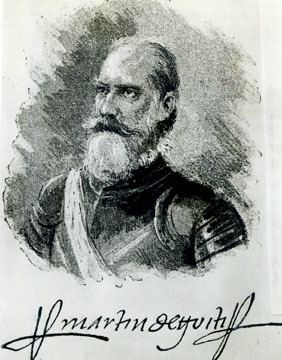
Under the leadership of Miguel Lopez de Legazpi, on December 11, 1571, he declared and recognized Pampanga as the First Spanish province on the Island of Luzon and also made Bacolor (BACULUD) served as his first colonial capital
Pampanga is one of the eight rays of the sun found in our flag as a recognition of its early revolt against the Spanish regime. The province has always been known for the bravery and courage of its people. It can also be proven that in the province of Pampanga, the aspiration for bravery and the promotion of Filipino culture began.
City and Municipalities
The Province of Pampanga consists of 19 municipalities and three cities (one highly urbanized and two component cities).
| +* – Capital City and Component City |
| ^– Highly Urbanized |
| *– component city |
| City/ Municipalities | District | Did You Know? |
|---|---|---|
| Angeles City^ | Lone | – Culiat is the former name of Angeles City. – It has been part of San Fernando for thirty years. – It is a 1st class highly urbanized city in Pampanga. – Angeles is promoted as a gastronomy tourist destination and is billed as the “culinary capital” of the Philippines. The city is known as a hub for Kapampangan cuisine as well as for its pork sisig. |
| Apalit | 4th | – The town of Apalit is one of the oldest towns in Pampanga. It began in 1582, sixty-one years after the official discovery of the Philippines in 1521. – The Apalit town is known for its Apung Iru Fluvial Procession, which is recorded as one of the most noteworthy water-based cultural traditions of the Philippines. The festival happens every June 28–30. |
| Arayat | 3rd | – The famous and picturesque Mount Arayat is located in an area that tourists often visit. -According to one report, its original name in the native language is “Dayat” from the term “Dayatan” which means irrigated farm or nursery. -According to another report, it was first identified by the name “alayan” which means “East.” Mount Arayat was then called Mount Alaya or Mount of the East. |
| Bacolor | 3rd | – It was the first center of the Philippine Civil Government (February 13, 1901). – The name “Baculud” was changed to “Bacolor” when the Spaniards came to this area in 1754, and it became the capital of Pampanga. – Bacolor has become the center of the social, cultural, and political activities of Pampanga. Because of this, it is called the Athena of Pampanga. |
Candaba | 4th | – Candaba is also known by the former name Candawe which is derived from a place near the sitio of Calumanas in Candaba. The word Candawe is abbreviated to the word Candaba. – One of the believed origins of the word Candaba is “Cang Daba” (or Brother of Daba). “Daba” refers to a large jar used and placed by large fish and mixed with salt and rice to make a traditional Pampanga dish called buro (pickled fish). It is also the main product of the locals. – Candaba is also famous as the “Fruit Basket of Pampanga” because of the melons, watermelons, and other abundant fruits they harvest there |
| Floridablanca | 2nd | – Historically, there are two reports regarding the origin of the name of the town of Floridablanca. The first newspaper stated that the name was derived from the Spanish word “Conde de Floridablanca ” in the person of Don Juan Monico (1726- 1808), a remarkable man of his time, who visited this town before its founding. – Another account is so devoted to a beautiful legend that is believed to have been accepted by the older people of the town because they learned it from their ancestors. This legend was woven when Fr. Jose Hernandez, OSA, in the area where the town is located where the church now stands. This place was formerly known as “Manggang Pulod.” The priest was very fascinated by the beauty of the place because he saw an endless plantation of white flowers of palat and pandacaqui. Due to the problem of naming this town, the good friar called it “Floridablanca” which means white flower. To this day this town is called by this name, Floridablanca. – Floridablanca served as a former military base of the Philippine Commonwealth Army and the Philippine Constabulary from the year 1842 – 1946. – In 1947, the Basa Air Base was established by the Philippine Air Force at the former American military site. |
| Guagua | 2nd | – The original name “Wawa” became “Guagua” to the first Augustinian priests in 1590. It is assumed that the word “Wawa” (saliva/ river mouth) refers to the watery or water (agua) in which Guagua is now described. And it is also possible that due to the absence of the letter “W” in the Spanish alphabet, Wawa became Guagua. – Guagua is known as the “Balayan Nung Arte” (Town of Arts). In the first year of American rule in the country, the children of Guagua became patrons of the Renaissance of culture and art. – In Betis, Pampanga you will find popular, beautiful, and quality furniture and sculptures made in the area. It is one of the most popular and main products in the area. |
| Lubao | 2nd | – There are two versions of the origin of the word “Lubao.” First, it is said to be a Pampango indigenous word “Lubo” meaning “Outside of the Narrow Sea Between Two Isles.” – Second, it is said to come from the Spanish word “Labajo” which means “very low” because it can easily sink in rainwater. In the long run, it became “Lubao.” – The town of Lubao is also home to the oldest church built in the Philippines. It was built in 1572 in the village of Santa Catalina and because it was always flooded there, it was forced to move to its present location. Today, San Agustin Church or better known as Lubao Church is among those declared on August 28, 2013, by the National Historical Commission as Important Cultural Property. |
| Mabalacat* | 1st | – Mabalacat became a town in 1712. – Today, Mabalacat is a 3rd class component city in the province of Pampanga declared on July 21, 2012. -The origin of the name Mabalacat comes from the word “Balacat,” it is a type of slender and tall tree, used as a pillar of the house. These towns are almost a forest chock-full of gigantic “Balacat” trees. |
| Macabebe | 4th | – The town of Macabebe is one of the oldest towns in Pampanga. – It was called Macabebe (bordering the river bank) because the homes of its first inhabitants were mostly built on the banks of the Río Grande de Pampanga or better known today as the Pampanga River. – Sometimes, it is also called Makabibe for the reason, that the town of – Macabebe was rich in corals and shells on the coast of Rio Grande de Pampanga in the past. – The Macabebe people are also recognized as the first Pampanguenos to fight the Spaniards to protect and defend their lands and the freedom they have long desired. – The valor of the Macabebes led to the naming of a street in Spain’s capital city of Madrid in their honor, “Calle de Voluntarios Macabebes.” |
| Magalang | 1st | – The town of Magalang was founded by Augustinian Missionaries in 1605 in Macapasa. – The Town of Magalang was earlier known as “Magalo” which comes from the Kapampangan word “Galo” which means moving and wavy, which describes the dangerous flow of the Parua River, an intermittent stream in Tarlac. |
| Masantol | 4th | – The municipality of Masantol is a small town, with fertile land and tributaries of rivers and streams. – The Municipality of Masantol was named “Masantol” because of the abundant santol fruits and santol trees that used to grow in the area. – Masantol was formerly a barangay of Macabebe in 1878 and was known as the town of San Miguel de Masantol and was reinstated in 1904. – In 1907, the municipality of Masantol was reinstated as a separate, independent municipality and continued to separate from Macabebe which has lasted until today. |
| Mexico | 3rd | – Masicu, is the first name of Mexico (Pampanga) because this area is rich in chico (“sicu”) plants. The fierce competition of the Spanish friars and the predominance of the Mexicans allowed Masicu to become Mexico. – Others believed that the name Mexico comes from the Pampango word “siku” (“elbow”) and it refers to the elbow-shaped bend of the nearby Abacan and Pampanga Rivers. However, there are no official accounts of the municipality ever being named Masicu. Instead, the root of the latter term is believed to be simply a common mispronunciation by the folks. |
| Minalin | 4th | – The municipality of Minalin is also better known as formerly called “Minalis” (“to move to”). – During the Spanish regime, the town of Minilan was called “Mina Linda De Las Mujerers” (a mine of beautiful women) for the reason that there were more women there. Later on, it was also called “Burol” (Hill) because it was surrounded by a river and it was quite high. – The town of Minalin became the center of trade for the people of Maopu, Pasak, and Sumpung. Subsequently, Chinese traders abbreviated the words to “Minalin.” From Mina Linda De Las Mujerers to Minalinah to Minalin Burul to Minalin. The place where the Chinese built the store to this day is called Minalin . – Minalin is also known for its unique Fiesta “Aguman Sanduk” New Year’s Celebration, where all the men in the Minalin area will dress up women like beauty queens and ride various colorful floats. – It is also known as the “Egg Basket of Central Luzon” because Minalin is home to one of the largest producers of eggs and poultry, which is why the town of Minalin held its first Egg Festival in the Philippines in 2008. |
| Porac | 2nd | – Porac is the largest town in Pampanga. It was once among the largest municipalities in the archipelago before it was divided into separate municipalities. – Porac is home to the Mekeni Food Corporation, an “AAA” Meat Processing Plant accredited by the National Meat Inspection Service (NMIS). |
| San Fernando+* | Lone | – The City of San Fernando is named after King of Spain Ferdinand VI and placed under the guardianship of Saint Ferdinand III of Castile and León, whose patron feast is celebrated every May 30. – The City of San Fernando is also known as the “Christmas Capital of the Philippines,” and is famous for its annual Giant Lantern Festival every December where each Barangay under San Fernando will display their large parols via competition. This is an annual tradition of the Fernandinos. – The capital of Pampanga. |
| San Luis | 4th | – The early settlers of this area had a firm belief that they could move and work on their own without the need for the help of others. They suggested calling their place “Cabagsac”. It was submitted to the Governor-General on January 12, 1760. – On February 16, 1761, Don Miguel Espeleta, Gobernador-General of the Philippines and president of the Royal Audiencia changed “Cabagsac” to the name of Patrocinio de San Luis Gonzales. |
| San Simon | 4th | – The town of San Simon was founded in 1770. The original name of San Simon was “Barrio Del Pilar” derived from the name of the founder of this town Don Mariano del Pilar de los Reyes. – This original name was changed to San Simon on November 15, 1771, in honor of Don Simon Anda y Salazar who became Governor-General during the Spanish period. |
| Santa Ana | 3rd | – Sta. Ana was formerly a vast forest surrounded by the towns of Mexico, Candaba, Magalang, and Arayat. – When the Spaniards arrived, it was named Sta. Ana from their patron Sta. Ana to whom they pray for their needs and spirituality. |
| Santa Rita | 2nd | – Sta Rita is popular for the turones de casoy, pastillas and more delicious delicacies. – The town started as a settlement at a place called Gasac in 1697, which is now Barangay San Isidro. – Due to Castilianization Sta Rita was referred often to as Santa Rita de Lele or neighboring Santa Rita and Santa Rita Baculud. – The name of Sta. Rita is derived from the name of their patron saint “Sta. Rita De Casia.” Note: Castilianization refers to the process by which a place or a person becomes influenced by Hispanic culture. |
| Santo Tomas | 4th | – Santo Tomas is the youngest and smallest town in Pampanga. -Baliwag is the traditional name of Sto. Thomas. It is named Baliwag because its people are always late for mass. Baliwag in Spanish means “late.” -This town was baptized Sto. Thomas, based on Sto. Thomas the apostle, whose feast is celebrated every 21st of December. |
| Sasmuan | 2nd | -Before the Spaniards came to the Philippines, the original name of the town was “Sasmoan” which comes from the old Kapampangan which means “Pitabnuan” which in English means “meeting place.” Unfortunately, since the Spanish regime and the American conquest, the town’s name has been changed to “Sexmoan.” – With the efforts of the Local ruler, the name “Sexmoan” was changed and the original name “Sasmoan” was used. -In 1991 the government authorities reinstated the “Sasmuan” as it is called to this day. |
History of Pampanga
Pre-colonial
The descendants of the Kapampangans came from the Madjapahit Empire of the Malang Region in Central Java. They are from the second group of Malaya migrants —- the last of the three ancient migrations that took place in the Philippines between 300- 200 BC. This migration led by Prince Balagtas remained on the shores of Luzon.
These areas became the center of the Pampango Empire. The first Pampango Empire was built and established during the period from 1335 – 1400. This empire comprised areas in Luzon, from Manila to Cagayan in the north. The arrival in the country and the conquest of foreign Spaniards caused the Pampango Empire to disintegrate and disappear.
Even before the Spanish ruled the Republic of the Philippines, the Kapampangans had their civilization. It can be likened to western civilization. They are already planting Manila hemp, ornamental plants, trees, and other plant species. They have also developed their knowledge when it comes to the art of weaving and they can weave tools, weaponry, equipment, and body ornaments from the metal they often use. They also have their writing system so they can also read and write. Established and intact a régime where there are laws they follow.
The Conquest of Foreigners in Pampanga
Pampanga during the Spanish Colonial Period
Fifty years after the end of the battle in Mactan, Legazpi arrived in Manila on June 3, 1571, where he was met by the invasions of the natives led by Bambalito, also known as Tarik Soliman, the brave warrior from Macabebe, supported by Prince Soliman and Rajah Lakandula. They led about a thousand Kapampangan warriors carrying spears and swords. Soliman and Lakandula fought the Spaniards under the leadership of Martin de Goiti who turned bloody at the mouth of the Bangkusay river.
Three hundred Kapampangans died in the battle that paved the way for the eventual collapse of the Pampango empire.
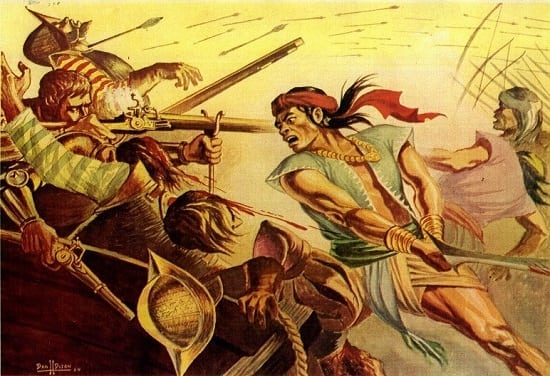
Pampanga was founded by the Spanish conquistador, Martin de Goiti, in 1571.
Like other parts of the Philippines, Pampanga was also occupied by the Spaniards. The group of Augustinian priests were the first to arrive in Pampanga and began their campaign of pacification. Because of the kind-heartedness shown by the earlier Spanish priests, the Kapampangans were easily converted to the new religion brought by foreigners. Many of them were baptized and became devout followers.
In the early days of the Spanish Regime, the Kapampangans became faithful to the Spaniards.
When Manila was attacked by Chinese pirates led by Lim-a-hong and 4,000 men in 1754, the Kapampangans helped out the Spaniards so that the Spaniards could drive out the Chinese invaders.
And in 1647, when the Dutch occupied and besieged the coastal zones of Luzon, the Kapampangans were ordered to drive out the incoming Dutch.
The Kapampangans not only help to defend the Philippines from the invasion of foreign powers but are also included in military expeditions. Eventually, however, the occupiers became conceited and exploitative by taxing them beyond their ability to compensate those who could not pay it.
When the Kapampangans could no longer stand the abuses of the Spaniards, they revolted against them. And considered the most serious of these revolts was the one led by Francisco Maniago of Mexico, Pampanga. Pampanga was one of the eight provinces that revolted against the Spaniards.
Under the encomienda system, Spanish military officials, friars, and individuals close to the king of Spain had the authority to accumulate harvest, surplus, taxes, and offerings. The encomienda system became the root of social problems in Pampanga. Due to extreme exploitations committed by some encomenderos, King Philip II of Spain in the year 1574 forbade the further awarding of private estates, but this ruling was not fully enforced until 1620.
Pampanga during the American and Japanese Colonial Period
The Spaniards were defeated in the war with the Americans, so they were forced to surrender the Philippines to America. The Filipinos had a new administration under American rule. The United States established the first civil government in the province of Pampanga on February 13, 1901.
During their tenure, the country’s problems increased. Agrarian has become the main problem facing Central Luzon and it has rapidly spread to neighboring areas, especially in Pampanga.
Filipinos have suffered even more under Japanese rule.
Japanese aircraft bombing the Clark Air Base on December 8, 1941, marked the start of the attack in Pampanga and a significant change throughout Pampanga history. From then on until 1942, the Japanese militaries tried to enter the province.
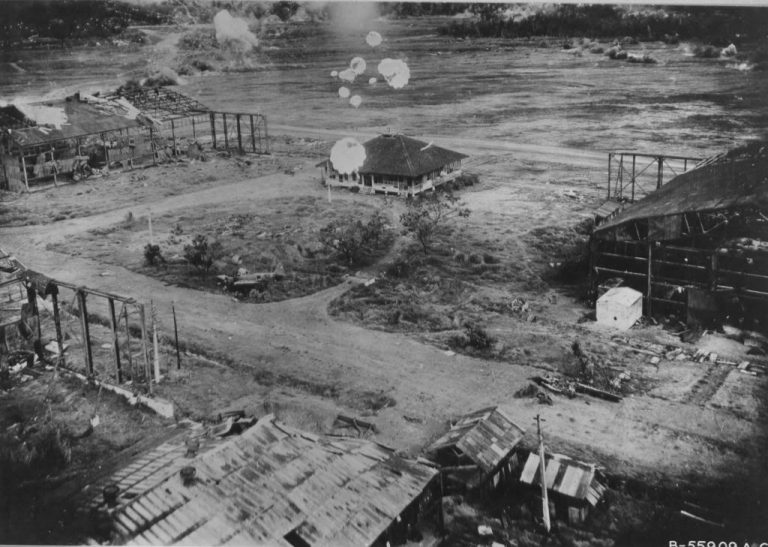
Source: https://www.alviera.ph/news/pampanga-history/
The commotion broke out and damaged many lives and properties. Pampanga was then known as the “hotbed of dissidence” in Central Luzon. With the outbreak of the second world war in 1941, comrades and workers who fought for social justice formed an organization- the HUKBALAHAP (Hukbo ng Bayan Laban sa Hapon-People’s Army Against Japan).
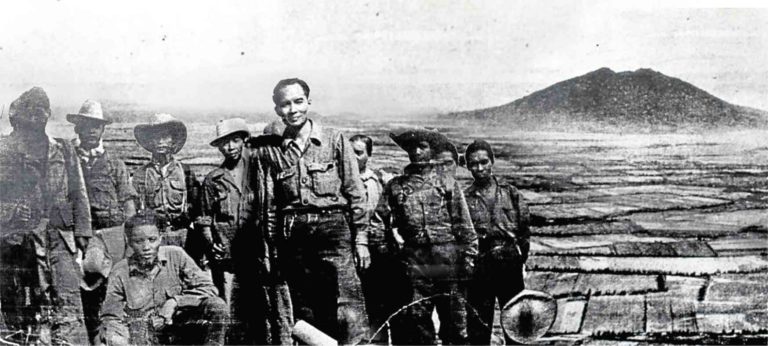
Source: https://newsinfo.inquirer.net/1102449/hukbalahap-monument-to-rise-in-ecija-town
The return of the Americans in 1945 worsened the problem. The patriotic guerrillas who revolted against the Japanese were tortured, arrested, and massacred. On the other hand, the pretending guerrillas and other groups whose loyalty during the war was questionable gained recognition. The problem of misunderstanding in Pampanga worsened after the war.
Pampanga After Post-War
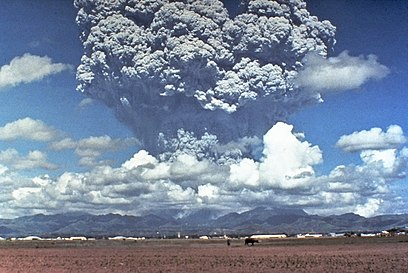
Mount Pinatubo exploded in 1991. The unfortunate occasion evacuated thousands of Pampangueños. Many were killed during the incident. The indigenous Aeta people were the ones affected the most by the eruption.
Over 8,000 houses were wrecked and 73,000 were damaged. The farming industry was seriously affected, destroying farmlands and killing more than half a million of livestock and poultry industry. As an outcome of the eruption, the American military armies uninhibited Clark Air Base.
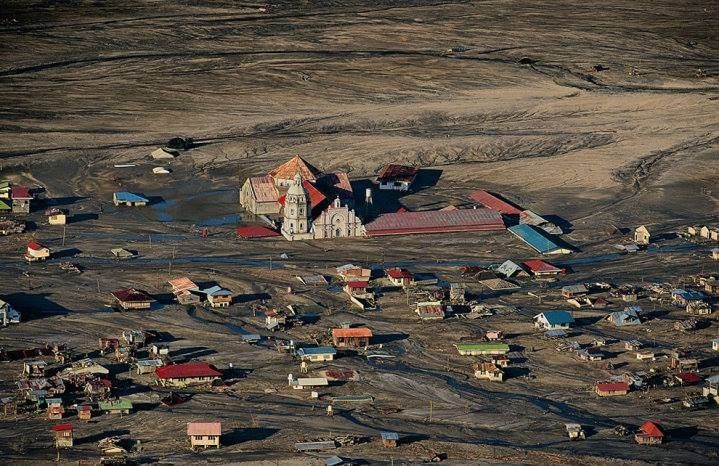
Geography
Pampanga is situated in the central part of Central Luzon. It is bounded on the north by Tarlac and Nueva Ecija, Bulacan on the east, on the south by Bataan, and on the west by Zambales. The province’s entire land area is 218, 068 hectares or 2, 180.68 square kilometers.
Climate
There are two distinct climates in Pampanga, wet and dry seasons.
Language/Dialect
Kapampangan, English, and Tagalog are the main spoken and understood languages anywhere in the province.
Major Industries
Farming and fishing are the core industries you’ll see in Pampanga. Rice and sugarcane are the major products they produce. The rivers and fishponds around Pampanga produce fish, shrimps, and crabs. In addition to farming and fishing, Pampanga supports flourishing cottage productions that focus on wood carving, fixtures assembly, guitars, and handcrafts.
During the Christmas season, Pampanga, especially in the capital city of San Fernando becomes the center of a booming industry centered on handmade lighted lanterns called “Parols” that parade a complex pattern of light and different colors. Other businesses include its casket industry and the manufacturing of all-purpose automobiles in the municipality of Santo Tomas.
Landmarks, Monuments, and Tourism Attractions
Angeles City
Bale Matua
Located in the navel of Sto. Rosario in the capital of Angeles City, the home of Pantaleon de Miranda and Dona Rosalia de Jesus was built in 1824.
Post Office Building
Located in Sto. Rosario was the concrete building of the U. S. Army as the prison of the United States Army Corps of Engineers from 1899-1901.
Pamintuan Residence
General Emilio Aguinaldo waved the Philippine Flag in this house to celebrate the first anniversary of Philippine Independence on June 12, 1899.
This building also served as General Douglas MacArthur’s headquarters in 1899.
Holy Rosary Cathedral
An obvious landmark in Sto. Rosario Street, the Holy Rosary church or Sto. Rosario church was built from 1877 to 1896.
It is said to be built by “forced labor” of Filipino peasants during the Spanish government. It was also used and served as a hospital for the wounded U.S. Army from August 1899 to December 1900.
Apalit
Ivory Image of St. Peter’s Shrine
Located at Sitio Alauli in 1844, the image was moved to his shrine in Capalangan; better known “Apung Iro” to the town people.
Arayat
St. Catherine Parish Church (Sta. Catalina Church)
One of the oldest churches in Pampanga and is known for its classical architecture.
Its initial construction during the late 1700s, it has been subjected to major modifications and changes such as the addition of enhancing ornaments and reliefs and re-painting works.
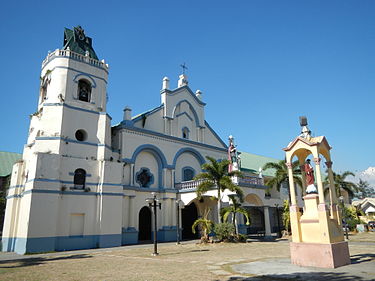
Bacolor
San Guillermo Parish Church
One of the oldest churches in Pampanga.
Made by Augustinian friars in 1576. The church remained half-buried after the eruption of Mount Pinatubo and serves as the main attraction in Bacolor town.
Candaba
Suspension Bridge
It resembles the famous San Francisco Bridge that the town is proud of.
FloridaBlanca
Sitio Palakol
Known as “Summer Place” located near the Gumian river.
St. Joseph Parish Church
Formerly known as a hacienda named San Jose de Calumpaui, the town was renamed Floridablanca. after the Count of Floridablanca, Spain (Don Jose Monino), who is rumored to own a massive tract of land in the area.
Fr. Jose Hernandez served as the first prior after the town became a parish in 1867, the same year Calumpaui became Floridablanca. Fr. Luciano Morron Ylla constructed the church and convent in 1887. It was under the Augustinians until 1960.
Guagua
Betis Church
The baroque-inspired Betis Church was constructed around 1660 under Father José de la Cruz. The original structure was made of light materials, mainly wood.
A fire broke out within the church numerous times due to these materials, so it was finally reconstructed with concrete in 1770. It was one of the best-made and most beautiful churches you can find in Pampanga.
Betis Artesian Well
It is located in front of the church of Betis, it is also the oldest well in Pampanga.
Mabalacat
Kamikaze East AirField
From this area took place the last flight of the first Kamikaze pilots as the official bomber on October 24, 1994.
Marcos Santos Residence
Served as the headquarters of Kamikaze pilots during World War II.
San Fernando
Archdiocesan Museum & Archives
It houses the antiques and indigenous works of our ancestors, human beings, artistic abilities, and Roman Catholics inspired by the Pampangos. The museum is located on the second floor of the Guerrero Building at the University of the Assumption.
The Archdiocesan Archives is located on the first floor of the Mother of God Council Seminary. This museum and archive are both located in San Fernando.
Pampanga Provincial Capitol
The seat of administration of the province of Pampanga, the original building was built after the provincial capital of Pampanga was relocated from Bacolor to San Fernando in 1904. It was the location of a major battle between guerilla forces and the Japanese Imperial Army throughout World War II. The building dates back to the 1930s.
Tabacalera House
Formerly owned by Tabacalera to house its representative, Don Ramon Lopez, the first floor served as the office of Tabacalera.
Later on, it was acquired by Simeon Ocampo. During the Japanese Occupation, it served as the headquarters of the Kempeitai.
Sasmuan
Archdiocesan Museum & Archives
It houses the antiques and indigenous works of our ancestors, human beings, artistic abilities, and Roman Catholics inspired by the Pampangos. The museum is located on the second floor of the Guerrero Building at the University of the Assumption.
The Archdiocesan Archives is located on the first floor of the Mother of God Council Seminary. This museum and archive are both located in San Fernando.
Sta. Lucia Parish Church
It is sited at Sta. Lucia, Sasmuan, Pampanga. It was the first church that was built by the Augustinians priests in the province.
The heritage church is situated right beside the Rio Grande, the ancient waterway that linked Pampanga to Manila.
The structure of the church was said to be created by Fr. Jose Duque in the 17th century. And in early 1800, it was renovated again and in 1884, was reinforced by Fr. Toribio Fanjul.
Modern Day Landmark and Tourist Attraction
Dinosaurs Island in Clark, Pampanga is an interesting attraction that will take you into a period that existed heaps of years ago. It’s the first-ever animatronics dinosaur amusement theme park in the Philippines
Puning Hot Spring is one of the rural tourist spots in Angeles, Pampanga. It is situated in an ancestral area of the Aeta indigenous people.
You’ll be surrounded by green plants along with the hot spring, making it an ideal escape for those who are seeking a relaxing environment.
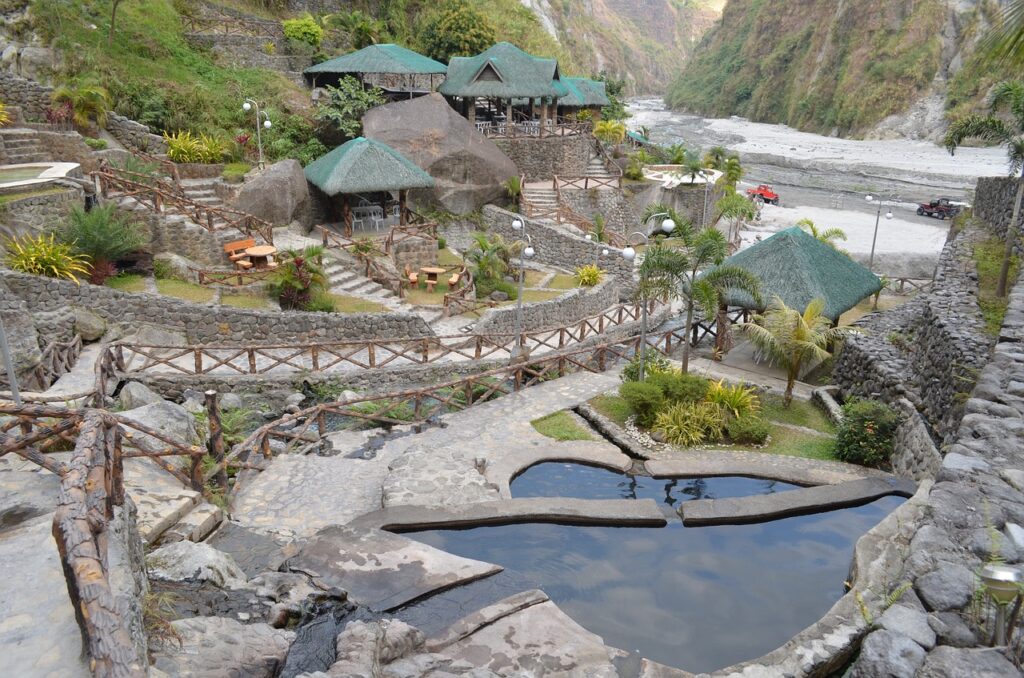
Candaba Swamp & Bird Sanctuary or Candaba Wetland is situated in Candaba, Pampanga. These 32,000 hectares of swamps consist of wetland, which covers freshwater pools, marshes, and grasslands. It’s considered a haven for those who love watching migratory birds.
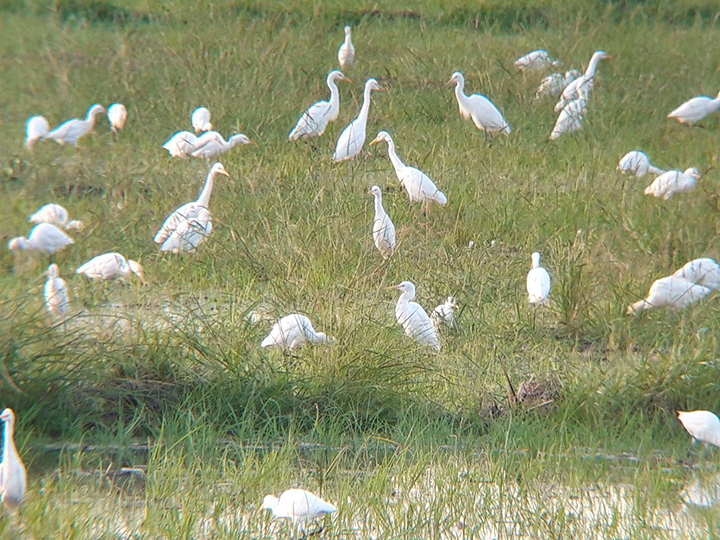
Miyamit Falls is located at Sapang Uwak in Porac, and is one of Pampanga’s most well-known natural landmarks in the province, The 100-ft Miyamit Falls is recognized for its robust water flows and rock foundations.
Experience one-of-a-kind thrilling rides and activities at Alviera’s Sandbox located in Porac, Pampanga. Labeled as the North’s latest escapade destination, Sandbox is made with one-of-a-kind rides and activities that will surely satisfy all adventurous people.
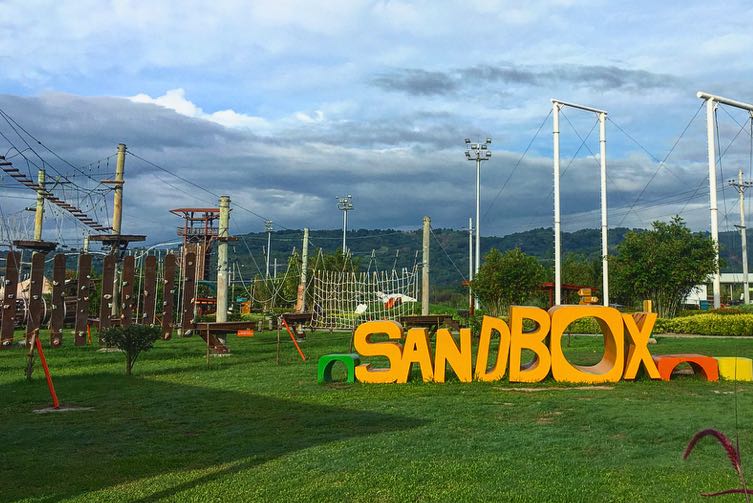
Mt. Arayat is an extinct volcano situated in the Province of Pampanga with no recorded historic eruption. Originally known for its stories of fairies and other supernatural beings that allegedly dwell its forestry, Mt. Arayat is now one of the well-known hiking spots in the province of Central Luzon.
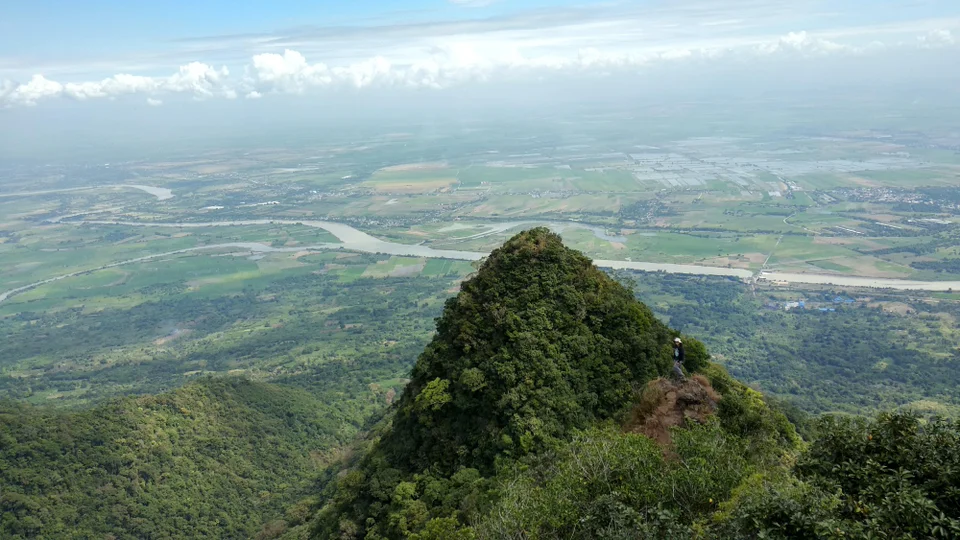
One of the newest tourist attractions in Clark, Pampanga, is the Clark Safari and Adventure Park. This gigantic zoo covers a huge area of forty hectares full of live entertainment, exciting rides, and activities, most especially, animal tours and adventure.
One of the newest tourist attractions in Clark, Pampanga, is the Clark Safari and Adventure Park. This gigantic zoo covers a huge area of forty hectares full of live entertainment, exciting rides, and activities, most especially, animal tours and adventure.
National Heroes and Historical Personalities
Jose Abad Santos
Jose Abad B. Santos was born in San Fernando, Pampanga on February 19, 1886.
He graduated in Law from the University of Illinois and earned his “Master of Laws” from George Washington University.
Before the war broke out, he was Secretary of Justice and in 1932, he became a Supreme Court Justice. He was captured by the Japanese in Carcar, Cebu on April 11, 1942.
And on May 2, the death sentence was executed for him by being shot by the Japanese group.
Aurelio Tolentino
Aurelio Tolentino was born in Barrio Santo Kristo, Guagua, Pampanga. He became famous for his literary art.
At the age of 23, he was able to work in Tondo, Manila as an “Official de Mesa” in a clerical position. Here, he met Andres Bonifacio.
Tolentino saw the great aspirations of the Katipuneros, so he helped publish La Solidaridad and other propaganda reform movements.
He also joined the organization of La Liga Filipina under Dr. Jose Rizal. He also became one of the first members of the congregation of the KKK Movement.
He was with Emilio Jacinto, Andres Bonifacio, and other revolutionaries in the cave where the First Cry of Independence took place on April 10, 1895.

Felix Galura
Felix Galura was a writer, poet, and leader of the revolution.
He was born on February 21, 1866, in Bacolor, Pampanga.
He is known as one of the playwrights of Central Luzon and the “Father of Kapampangan Grammar.”
As a writer, he used the pseudonym “Flauxgialer.” Galura is one of the three main playwrights of Bacolor; with him were Byron and Juan Crisostomo Soto (known as “Crissot”).
In 1906, he wrote a novena prayer, “Pamagsiam King Ikarangal Ning Ginu Tang Virgin Karin Lourdes.” In 1915, he wrote, “Ing Kabiguan” (The Failure) about a revolt against the Spaniards.
He founded Ing Alipatpat, a weekly publication in Pampanga.
In 1916, he wrote a book on grammar, Sanayan o Malaguang Pipagaralan qng Amanung Castila Agpang qng Gramatica (Exercises on the Easy Way to Learn Spanish Using Grammar). Because of this work, he is recognized as the “Father of Kapampang Grammar.
Juan Crisostomo Soto
Juan Crisostomo Soto is the most famous Pampango poet.
He is better known by the nickname “Crissot.”
He was born in Santa Ines, Bacolor, Pampanga on January 27, 1868.
Under his pseudonym, Crissot, he wrote a lot of lyrical poems, entertaining plays and philosophical essays, historical performances, and “sarswelas,” the most famous of which is “Alang Dios” or There is no God (1901).
He interpreted some Spanish literature into Kapampangan language, which includes Lovers of Teruel Faust and Nero and the Gladiators.
He was also one of the contributors to the revolutionary paper La Independencia.
During the 1896 Revolution, he joined the Katipunan and worked with Maximo Hizon in reinforcing Pampango ideals.
He died on July 12, 1918, at the age of 51.
Gregorio Torres Singian
Gregorio Torres Singian was born in San Fernando, Pampanga on May 9, 1872, and was recognized as the Father of Philippine Surgery.
In March 1896, Dr, Singian finished his degree in Medicine from the University of Santo Tomas (UST), then started the Philippines College of surgeons in 1936.
Remarkably, when Dr. Singian was the director of the San Juan De Dios Hospital in the year 1920, it was affiliated with UST and developed the UST Department of Surgery in 1929 where he introduced programs and residencies that helped make Philippine medicine what it is today.
He traveled far to Europe, visiting hospitals, and clinics, and gaining knowledge relating to surgical procedures. When he returned to the Philippines, he established a modern laboratory electro-therapy clinic.
Before that, in 1907, Dr. Singian was selected in the Philippine Medical School as the first Filipino Associate Professor of Surgery, which later turned out to be the University of the Philippines College of Medicine.
He died on January 29, 1937, at the age of 64.
More Notable people
- José Alejandrino – born in Arayat, Pampanga. Philippine Revolutionary General and ex-senator.
- Mamerto Natividad – born in Bacolor, Pampanga. Philippine Revolutionary General.
- Servillano Aquino – Philippine Revolutionary General and member of Malolos Congress for Samar
- Nicolasa Dayrit Panlilio – the Filipino non-combatant in the Philippine–American War, acknowledged for serving to minister the sick and injured Filipino soldiers.
- Práxedes Fajardo – Filipina revolutionary and head of the Pampangan section of the Philippine Red Cross during the anti-colonial armed struggles against Spain and the United States.
- Pedro Abad Santos – a previous assemblyman and founder of the Aguman ding Talapagobra ning Pilipinas.
- Luis Taruc – leader of the Hukbalahap group (from Hukbong Bayan Laban sa Hapon) between 1942 and 1950.
- Casto Alejandrino – peasant leader and commander-in-chief of the Hukbalahap.
- Vivencio Cuyugan – previous mayor of San Fernando, and one of the creators of the guerrilla group Hukbalahap
Literature and Arts in Pampanga
Arts and Crafts
Kuran at Pasu (Sto. Tomas)
Practical and ornamental clay pots and containers were among the most primitive crafted things created by man. All types of pottery—as well as the universal ‘kuran’ (round-bottom cooking pot) have been produced in most parts of the province Pampanga in the 1900s. Sto. Tomas is the recognized pottery center in Pampanga.
Pukpuk (Betis, Apalit)
Betis handicrafts workers become skilled at the art, locally called as ‘pukpuk’ (to hammer) Craftspersons spread the art to Apalit, Pampanga which once had the largest number of ‘pukpuk’ workshops. Until to these days, the tradition is still continued.
Dukit (Betis)
Betis is known to be the town familiar with high quality carved woodcrafts (“dukit” -to carve) —from churches and home fixtures, ornamental architectural pieces, to religious sculptures and relief figures.
Parol making (San Fernando)
The art of parol-making began with the name Francisco Estanislao, who is believed to have made the first parol in 1908 by means of the old-style five-point star design. Back in those days, there’s still no electricity in Bacolor (Pampanga’s former capital city) and according to popular belief, lanterns were used by the town folks to light the roads on their way to the church to attend the Simbang Gabi.
Gitara(Guagua)
Cebu is well recognized as the Philippines’ guitar industry front-runner, but the more familiar guitar products are specially made in the town of Guagua, Pampanga. The one who pioneered making guitars in Pampanga is Matuang Bacani who succeeded in imitating an old Spanish guitar. He passed on his methods to his son-in-law, Angel Lumanog who learned the expertise of guitar-making, opened a guitar shop, and began supplying the nearby stores of Macabebe, Bacolor, and San Fernando City. Shortly, his guitars were being sought after in Manila. These days, the Lumanog brand is a name synonymous with high-quality guitars.
Literature
Arte y Regla De La Lengua Pampanga, Compuesto por el Padre Predicador Fray Francisco Coronel y prior misionero del Convento de Macabebe, 1621. (Kapampangan Grammar and Rules, by Fr. Francisco Coronel, prior of Macabebe, ca, 1621) – The earliest Kapampangan grammar and rule book in existence.
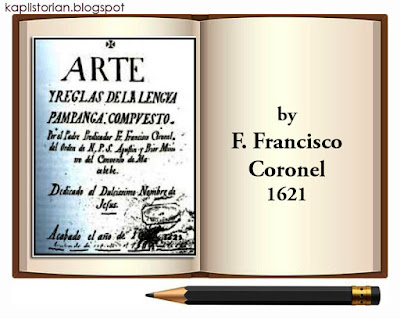
GONZALO DE CORDOBA, Comedia Heroica de la Conquista de Granada o sea Vida de Don Gonzalo de Cordova, Llamado el Gran Capitan. By Fr. Anselmo Jorge Fajardo, ca. 1830s. published 1912, by Cornelio Pabalán y Byron. (Heroic Comedy of the Conquest of Granada or The Life of Don Gonzalo de Cordova, Called the Great Captain – The lengthiest comedia (also known as “moro-moro”) in Philippine literature, the play was about the exploits of Capt. Cordoba took seven nights to be completed, as the lines alone add up to 31,000. When printed, the book was 832 pages long. It’s not surprising that it was only published once, over a century ago.

A CHILD OF SORROW. A Novel by Zoilo M. Galang. 1921. – The first novel was printed in English that was written by a Filipino. The novel– was made into a film in 1930. Zoilo Galang of Bacolor, also was an encyclopedist, who organized the 10-volume “Encyclopedia of the Philippines” issued in 1934-36.
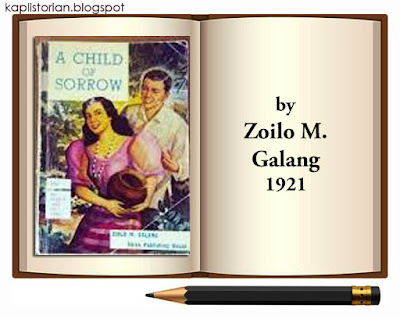
BORN OF THE PEOPLE, by Luis Taruc. 1953. Published by International Publishers. Reprinted 1973. An autobiography of the leader of the guerilla group Hukbalahap or Hukbong Bayan Laban sa Hapon during 1942 and 1954. In 1930’s, Luis Taruc became involved in the agrarian reform problems. He commanded his Huk guerrilla operations counter to the Japanese Imperial Army during World War II. in the Philippines
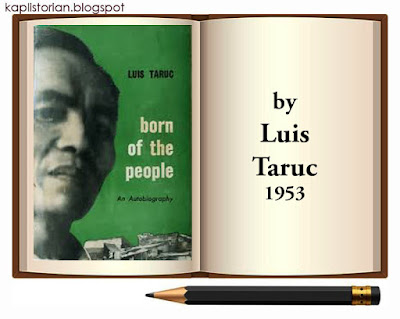
JUAN CRISOSTOMO SOTO AND THE PAMPANGAN DRAMA, by Juan S. Aguas. 1963. University of the Philippines, Q.C., reprinted, 2016. – A study on the life and works of one of the greatest Kapampangan playwriter, Juan Crisostomo Soto (1867-1918), with special mention for his work of art, “Alang Dios”. Adapted from Soto’s thesis from 1955. Soto has a total of 50 plays, over 100 poetries, essays, novels, and scores of short stories which shows that his literary output is unmatched in volume and number.
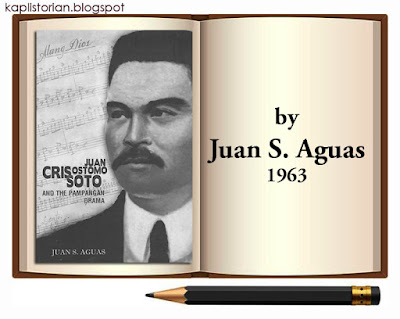
Culinary Arts
Pampanga is the “Culinary capital of the Philippines.” No wonder, the province is known for its rich and cultured culinary works. Kapampangans are so diverse and best known for their culinary creations.
Meat Products
Most Meat products we love are mostly from Pampanga. Roel’s Meat Products, Pampanga’s Best, and Mekeni Food are among the familiar meat products of the Philippines manufacturing Kapampangan favorites such as pork and chicken tocinos, beef tapa, hotdogs, chorizos, longganisa (Philippine-style sausages), and more meat products.
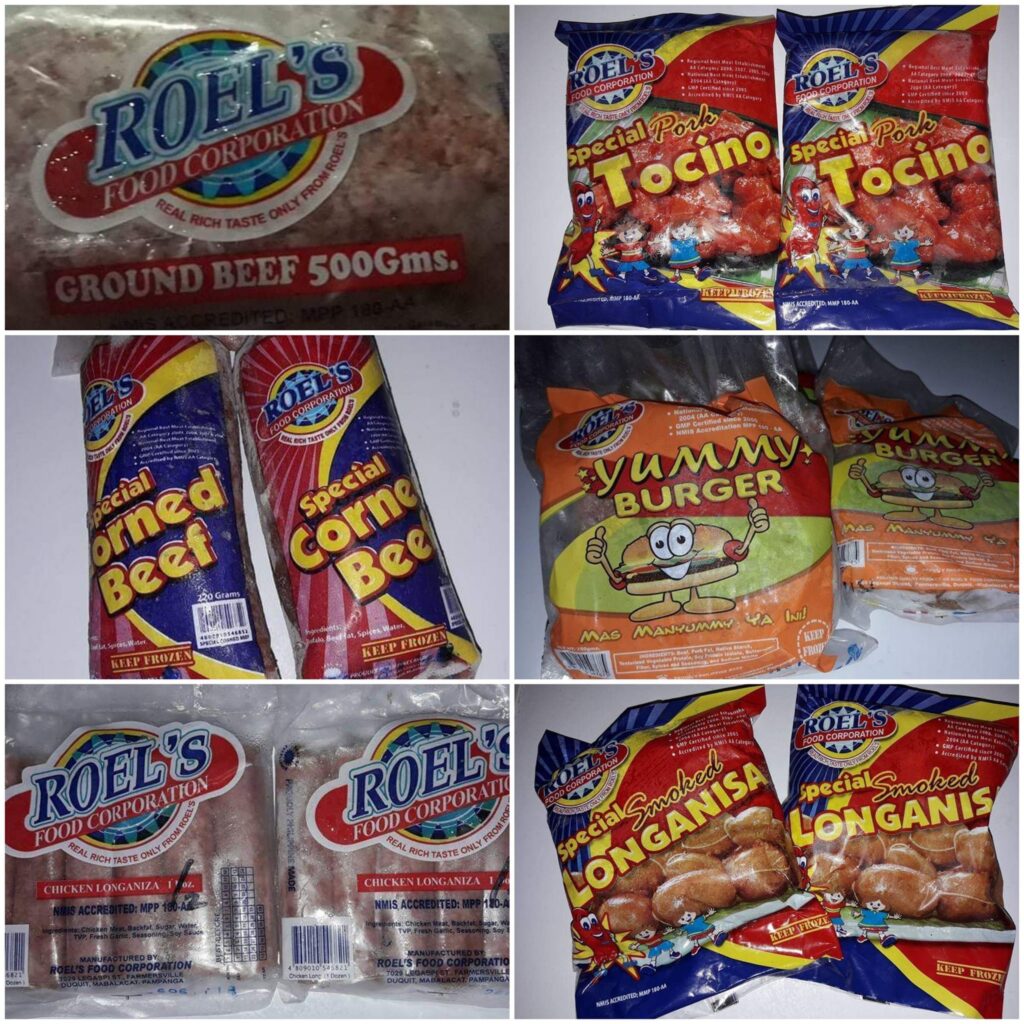
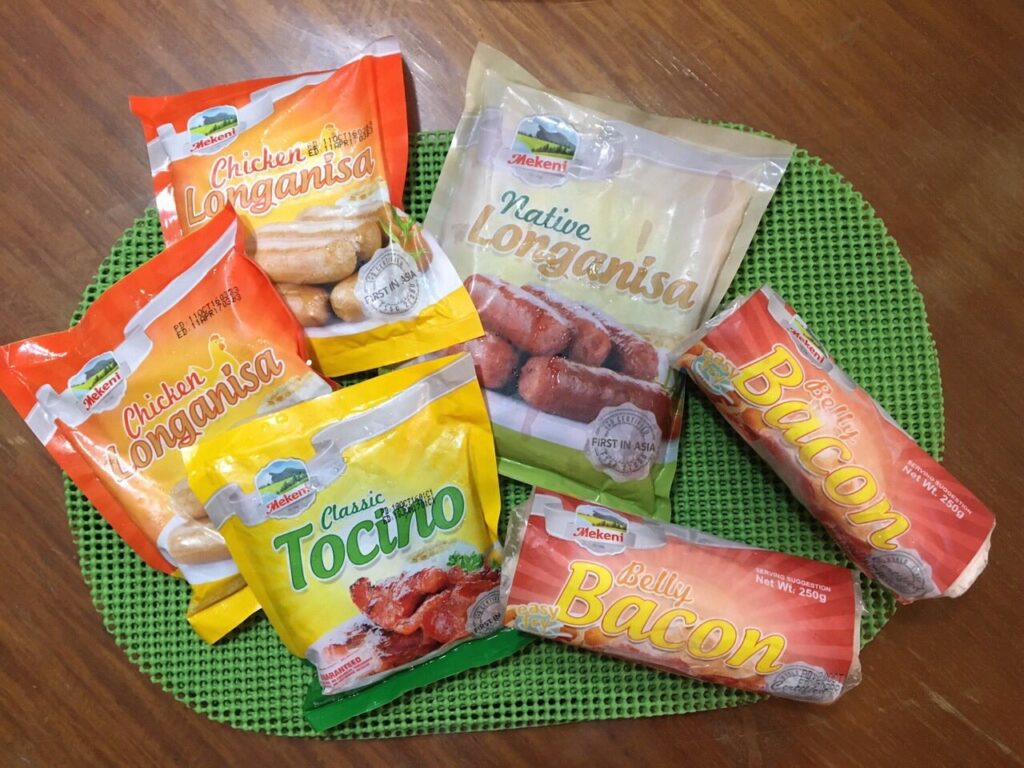
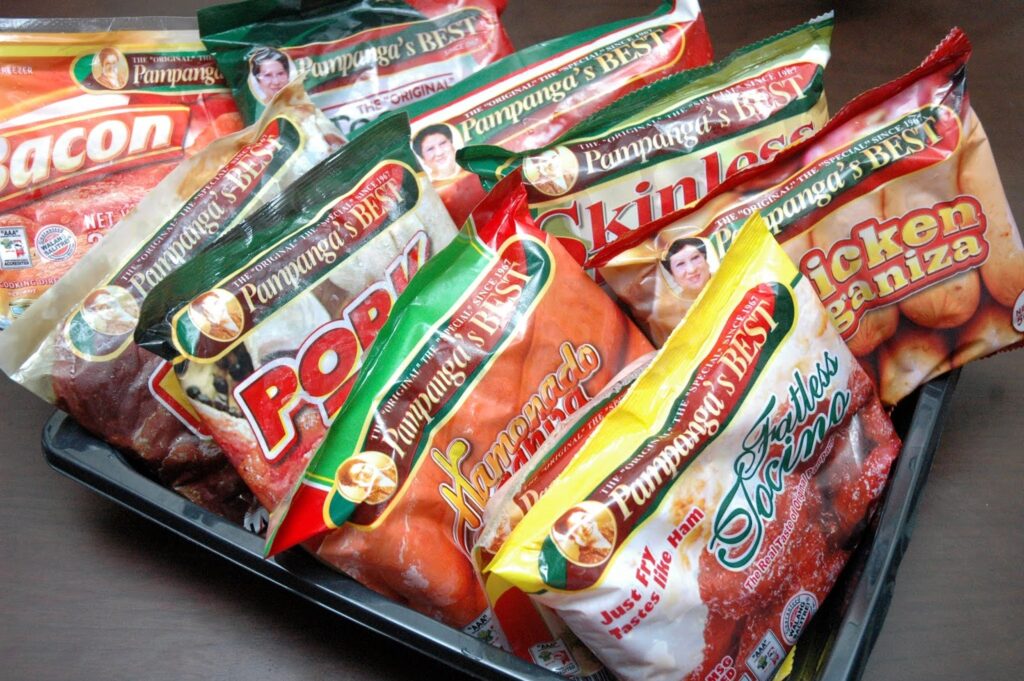
Betute Tugak and Camaru
Pampanga is also famous for its exotic or bizarre food, the Betute Tugak, and Camaru. Pampanga is a place where you can find a rice field, making farm frogs and crickets a normal sight in the place. Don’t be surprised if you’ll eat this food. These exotic dishes have a special place in the heart of every Kapampangan.
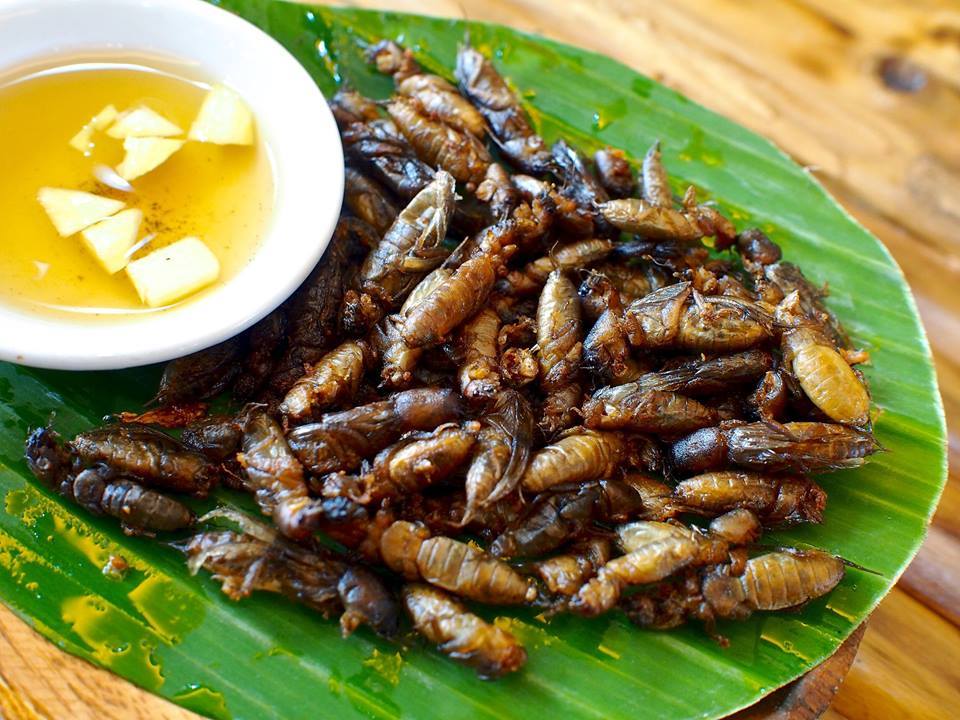
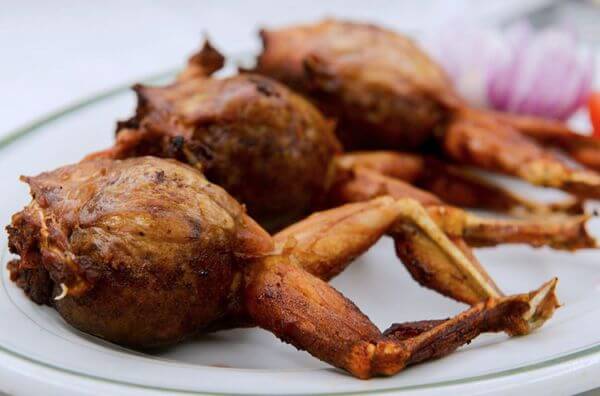
Sisig
One of the dishes that is well acknowledged to be an original Kapampangan dish is none other than Sisig. Pampanga is also known as the “Sisig Central,” on the account of Aling Lucing, a restaurant owner known to be the creator of the well-loved dish.
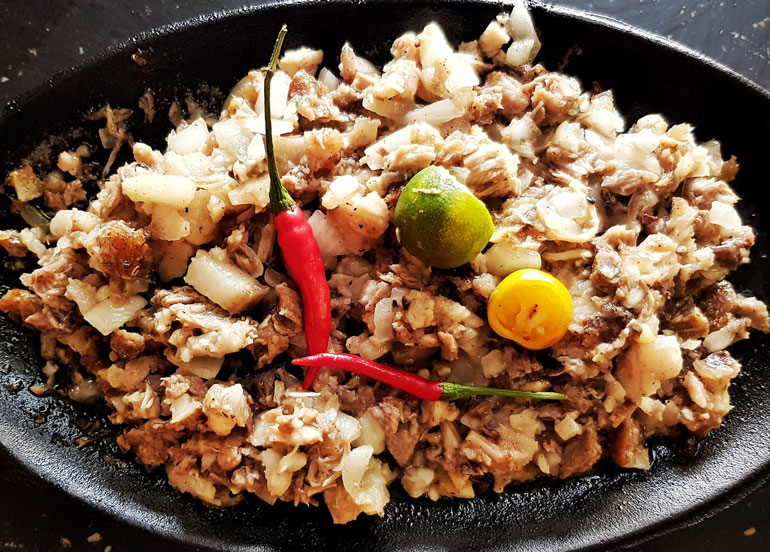
Kapampangan Buro
Buro or balo-balo is basically fermented rice mixed with shrimp or fish. This is Pampanga’s famous and most loved side dish or sauce. For those first-timers, the odor of the Buro is quite strong, yet the taste is quite good and unique, especially when eaten with any kind of fried fish and mustasa.
Biringi
Bringi is a dish that’s originally a variant of Spanish paella from the province of Pampanga. It uses rice and glutinous rice mixtures cooked in coconut milk with turmeric, giving the food its distinct flavor and color. You can add chicken, bell peppers, green peas, and eggs.
Panecillos de San Nicolas (San Nicolas Cookies)
San Nicolas Cookies, famously known as the “mother of all Philippine cookies”, is made here, famously made by Lillian Borromeo in Mexico, Pampanga. It is also one of the oldest cookies in Asia dating from the 19th century. It’s a family heirloom cookie.
Bulanglang Kapampangan
Bulanglang Kapampangan is comparable to the Filipino dish, Sinigang. It has the similar variable main ingredients of pork, prawn or shrimp, or fish, and a wide selection of vegetables. What makes Bulanglang Kapampangan unique: It’s the guava fruit that makes it sour.
Tibok-tibok
Tibok-Tibok looks a lot like that of the Maja Blanca. Except, this Kapampangan delicacy is made of Carabao milk instead of using coconut milk. The white pudding also has a blend of lemon zest and has latik or simmered coconut as a topping when served.

Turrones de Casoy
Turrones de Casoy is one of the must-try Filipino sweets that originated in Sta. Rita Pampanga, and, one of the best pasalubong for families staying in the province.
The Turrones de Casoy, inspired from the Spanish candy nougat consisting of ingredients like honey, sugar, egg white, and fruits, with the addition of Casoy nuts in the ingredients, giving the delicacy a delectably distinct taste that you’ll never forget.
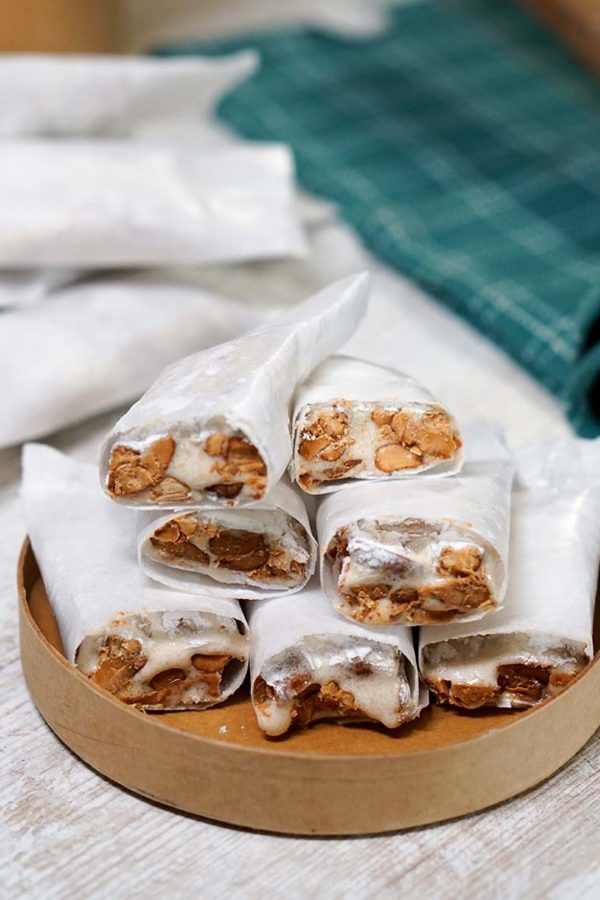
Morcon Kapampangan
Morcon is a superior dish from Pampanga that’s usually present at parties because of its delicious and appetizing appearance. Kapampangan Morcon is made of ground pork and beef meat, eggs, chorizo, onions, grated cheese, and raisins. T’s similar to Filipino Embutido in appearance but, the taste is quite different.
References:
Kasaysayan ng Lokal Pampanga: Written, researched, and taught in Region III as a Pioneering Project of Zaide Foundation and the Department of Education.
*https://kaplistorian.blogspot.com/search?q=literature
*https://www.pinterest.ph/pin/45739752439205299/
*https://pueblodeoro.com/blog/5-must-try-delicacies-in-pampanga
*https://en.wikipedia.org/wiki/Pampanga
*For corrections or commentaries, please email us at whereinpampanga@gmail.com































